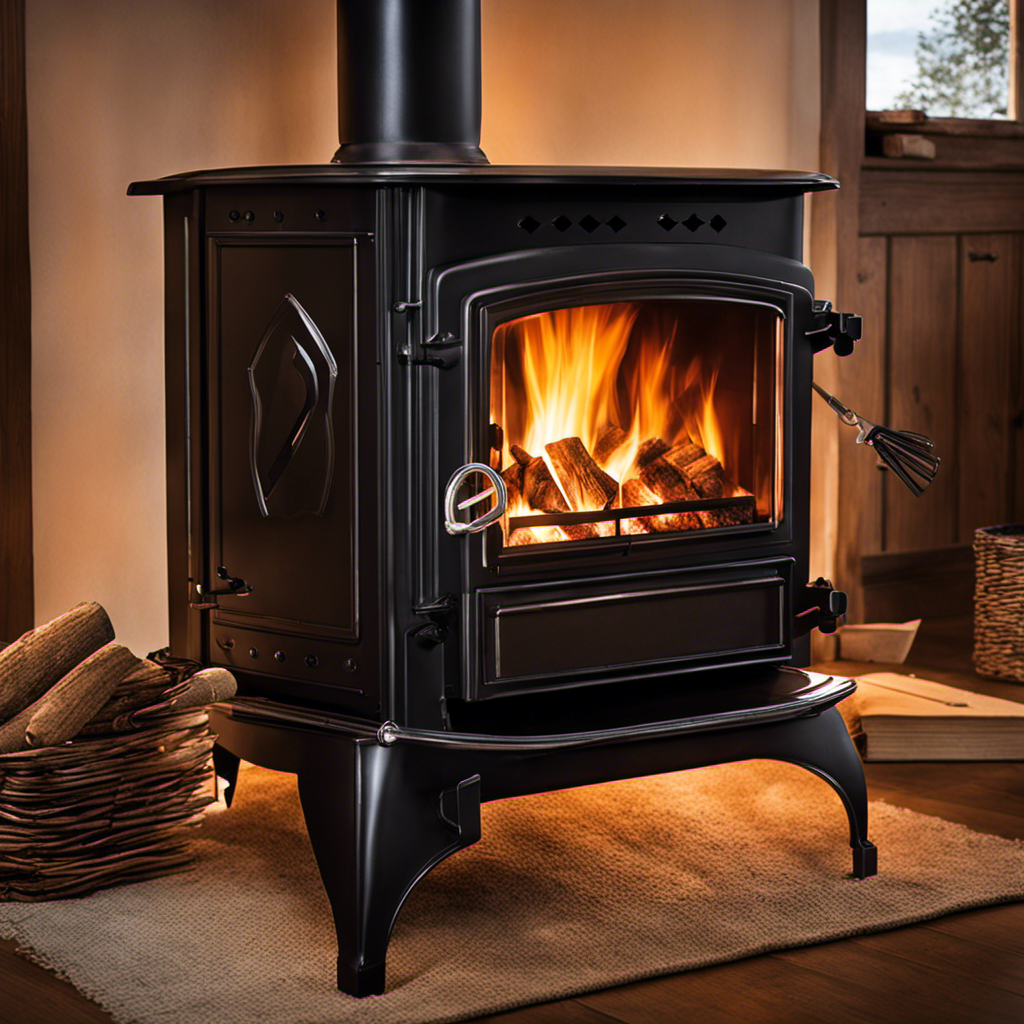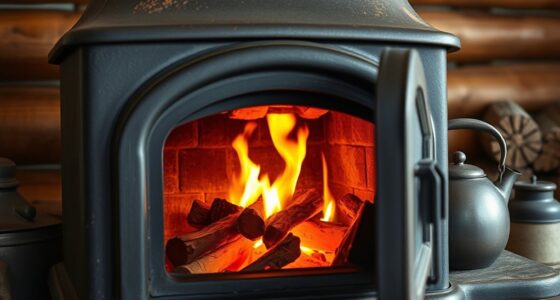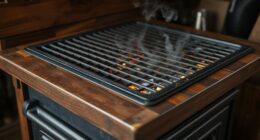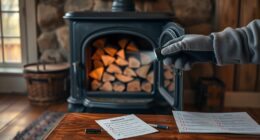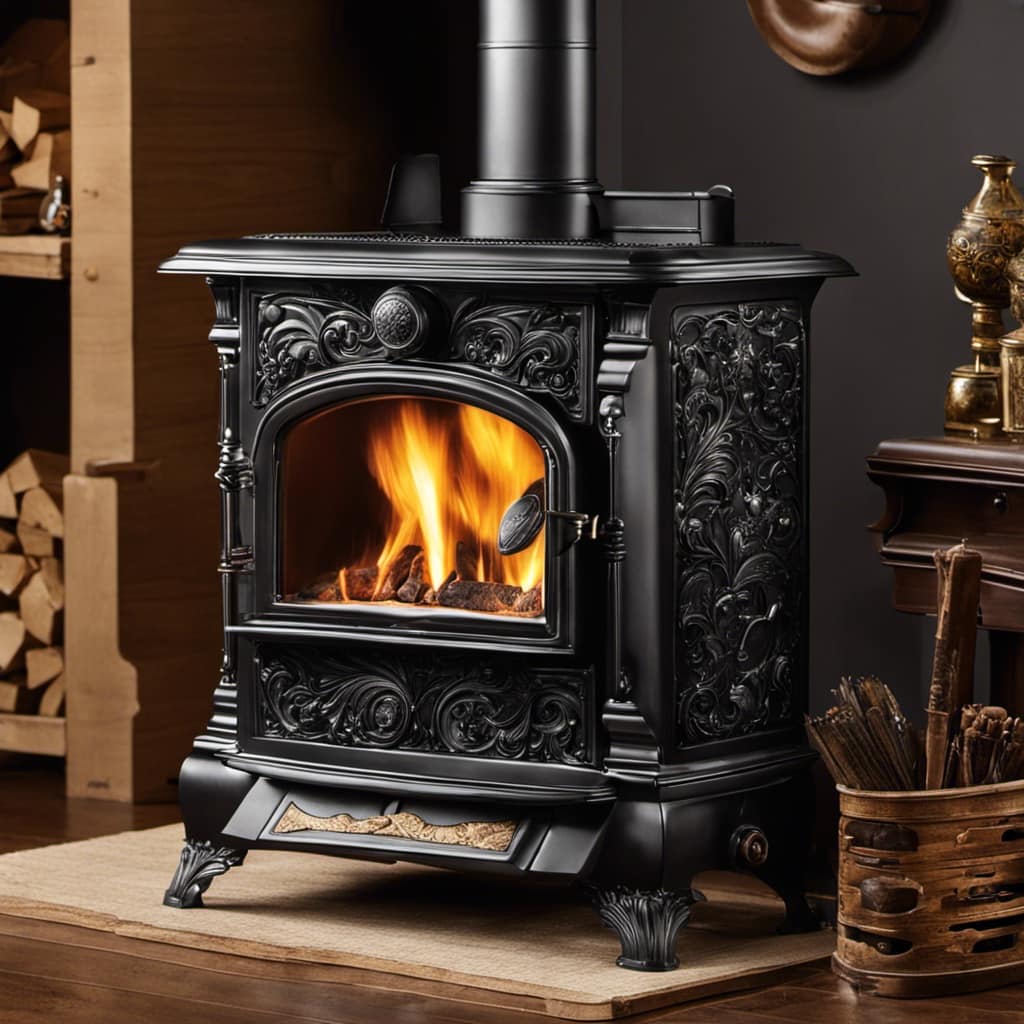
I have a great appreciation for wood stoves and have learned that the protective shield behind the stove is just as important as the stove itself. It acts as a safeguard, protecting your home and family from potential dangers.
So, what exactly do you need behind your wood stove? In this article, I’ll guide you through the essential safety measures, insulation requirements, and heat shields that will ensure your cozy haven remains secure and warm.
Let’s dive into the world of fireproof materials and clearance guidelines together.
Key Takeaways
- Fire extinguisher should be readily accessible and regularly inspected and maintained
- Install a carbon monoxide detector near the stove for early warning of dangerous levels
- Proper insulation and venting systems are necessary for energy savings and a comfortable environment
- Follow clearance guidelines and use fireproof materials to create a safe environment and minimize fire risk
Safety Measures
I should always prioritize safety when it comes to my wood stove. As a responsible homeowner, I understand the importance of implementing safety measures to prevent any potential accidents or hazards.
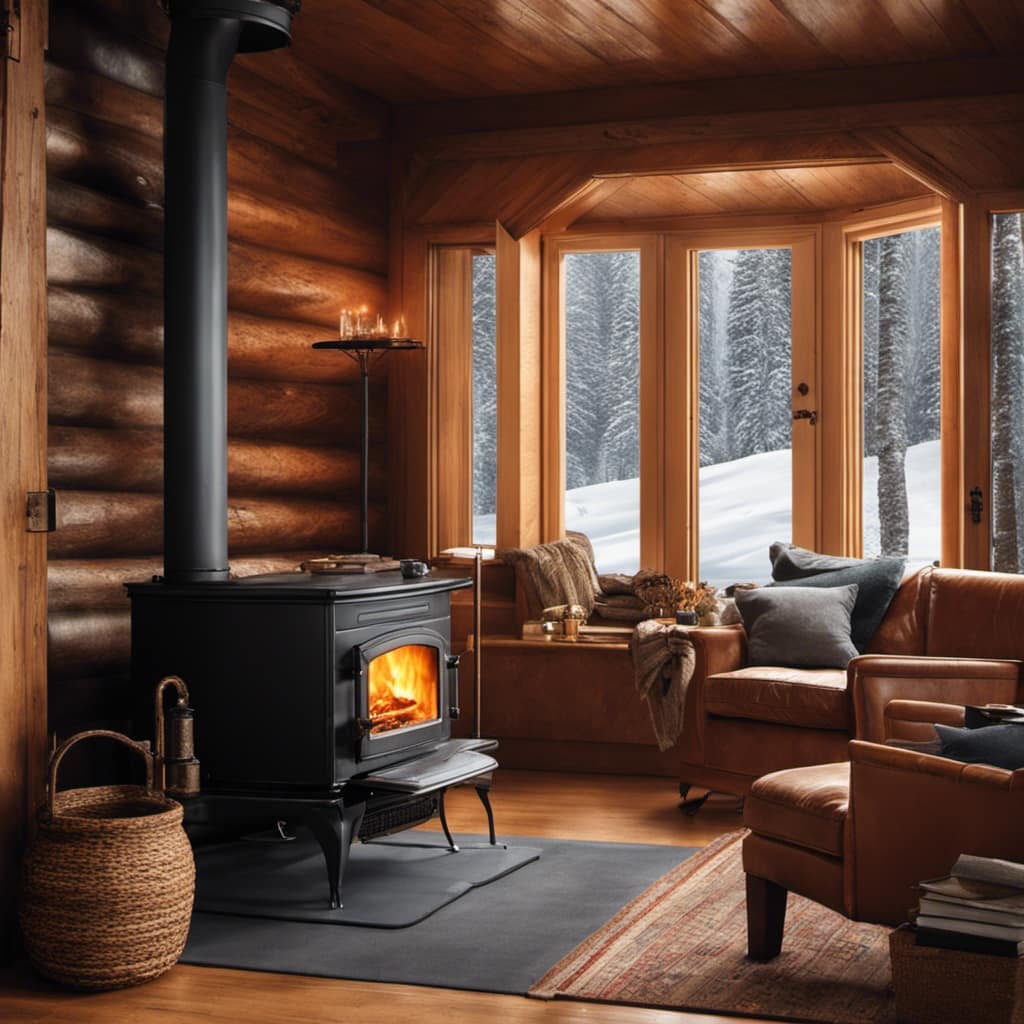
Two crucial components that should be present near my wood stove are a fire extinguisher and a carbon monoxide detector.
Having a fire extinguisher readily accessible is essential for quickly extinguishing any potential fires that may occur. It’s crucial to choose a fire extinguisher that’s suitable for extinguishing wood-related fires, such as a Class A fire extinguisher. Regularly inspecting and maintaining the fire extinguisher is equally important to ensure its effectiveness.
Additionally, a carbon monoxide detector is vital to detect any build-up of this poisonous gas that may be emitted from the wood stove. Carbon monoxide is a silent killer, and having a detector installed near the stove can provide an early warning sign of any dangerous levels of carbon monoxide.
Insulation Requirements
After researching, I’ve found that the insulation requirements for a wood stove vary based on the specific model and local building codes. When it comes to energy efficiency, proper insulation is crucial.
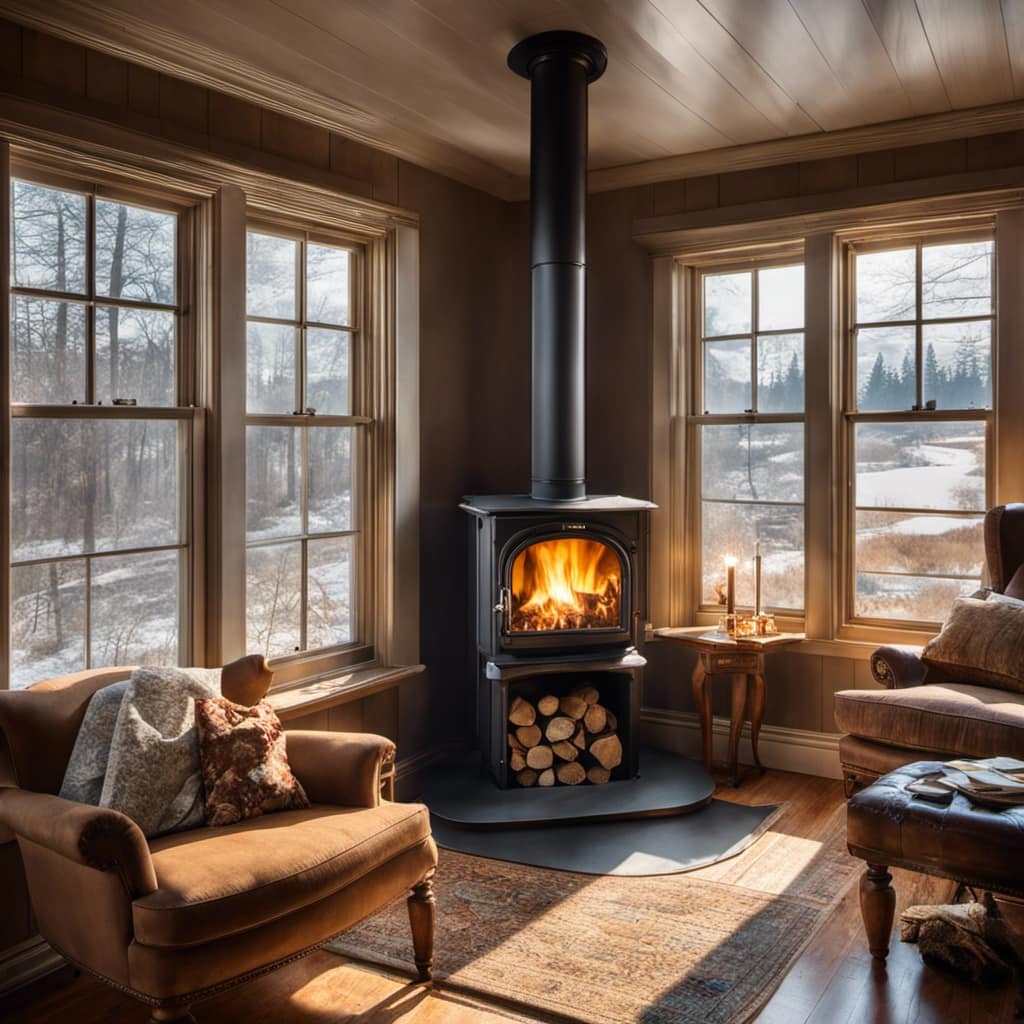
Insulating the area behind your wood stove helps to prevent heat loss and ensures that the generated heat is effectively directed into your living space. This can result in significant energy savings and a more comfortable environment.
Additionally, insulating the surrounding area can also help protect your walls and flooring from damage caused by excessive heat. It’s important to consult your local building codes to determine the required insulation thickness and materials.
When considering ventilation options, proper insulation should be combined with appropriate venting systems to ensure the safe and efficient operation of your wood stove.
Heat Shields
To protect the surrounding area from excessive heat, it’s important to install heat shields around the wood stove. Heat shield installation is a crucial step in ensuring the safety and efficiency of your wood stove. These shields are designed to reduce the distance between the stove and combustible materials, minimizing the risk of fire.
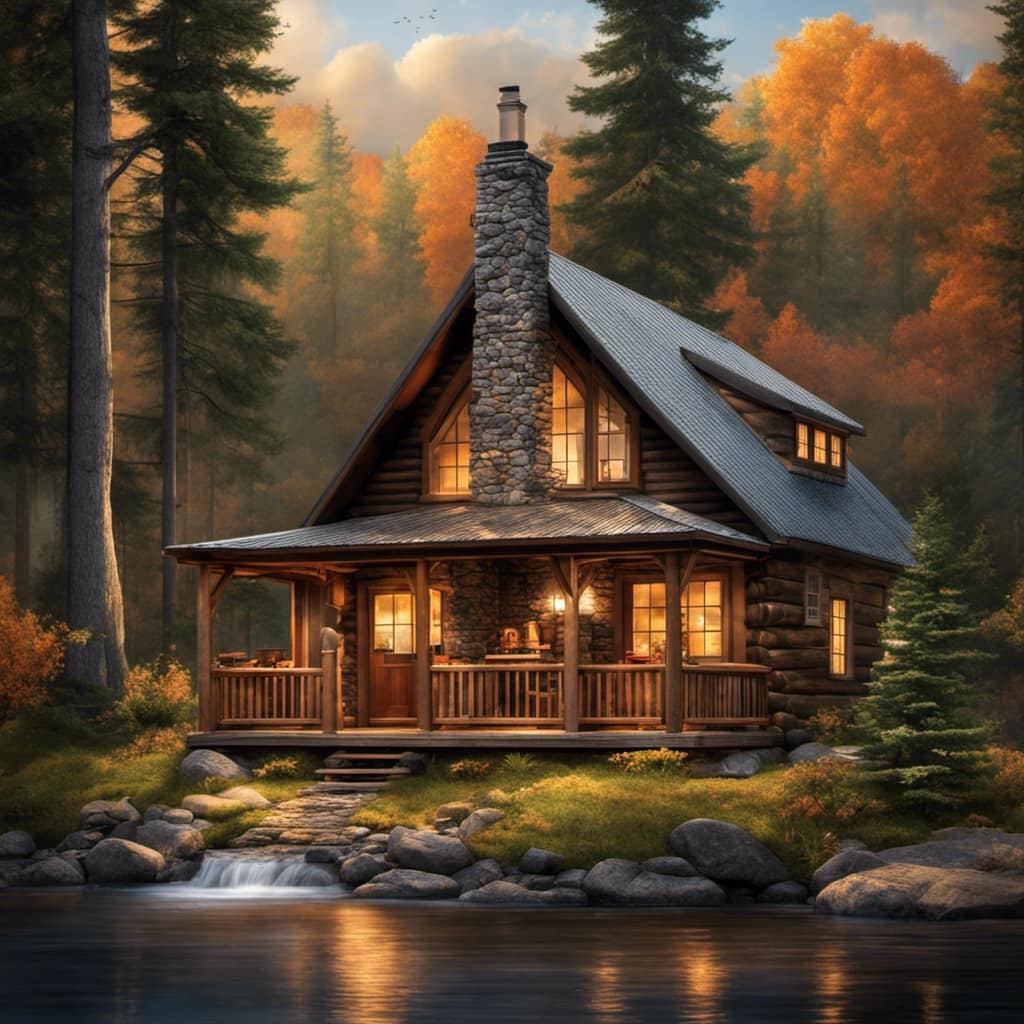
When installing a heat shield, it’s important to follow the manufacturer’s instructions and guidelines. Regular heat shield maintenance is also necessary to ensure its effectiveness. This includes cleaning the shield regularly to remove any soot or debris that may accumulate over time. Additionally, inspecting the heat shield for any signs of damage or wear is essential.
By properly installing and maintaining your heat shield, you can enjoy the warmth of your wood stove while ensuring the safety of your home.
Now let’s move on to discussing the clearance guidelines for your wood stove.
Clearance Guidelines
Installing a heat shield is important, but it’s also crucial to consider the clearance guidelines for the wood stove. Clearance regulations ensure the safe operation of the stove and prevent any potential fire hazards. The National Fire Protection Association (NFPA) provides specific guidelines to follow.
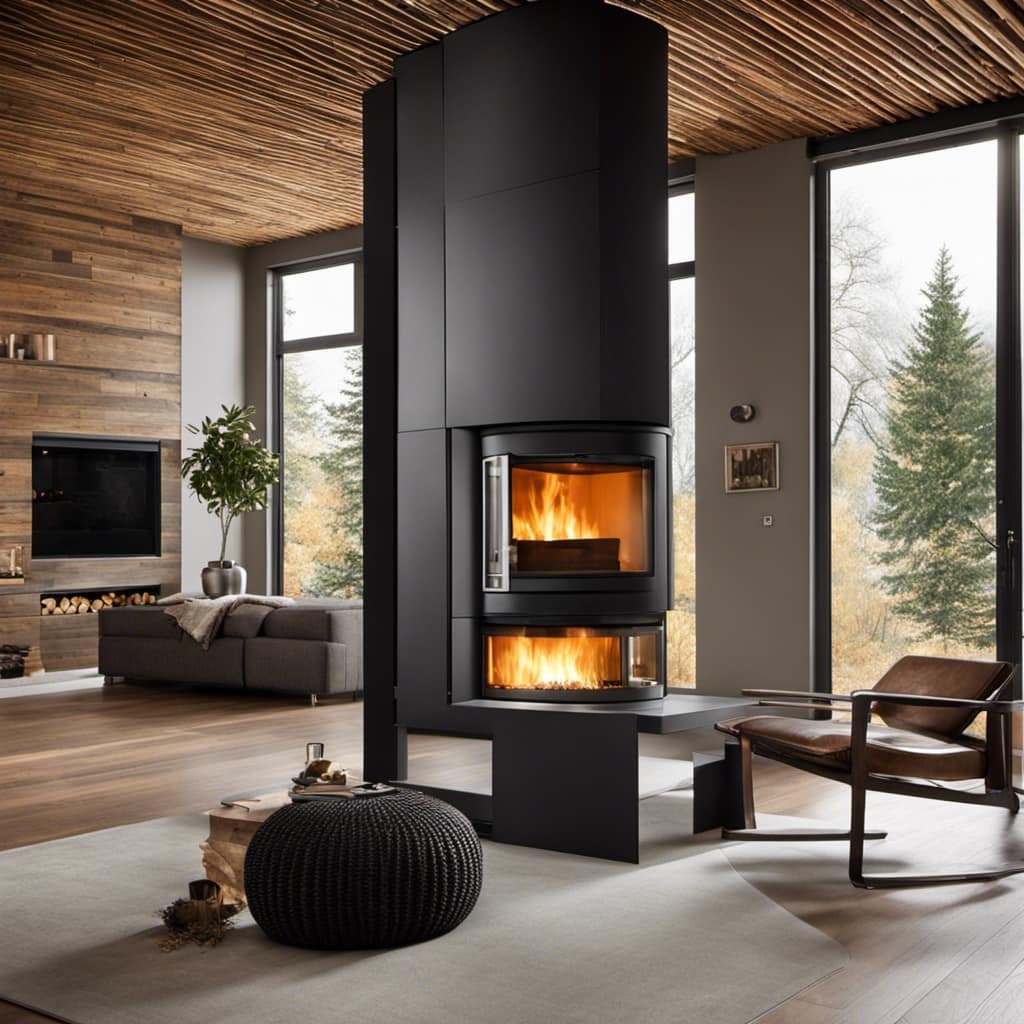
For example, the stove should have a minimum clearance of 36 inches from combustible materials, such as walls and furniture. However, this distance may vary depending on the stove manufacturer’s recommendations. Proper ventilation is also essential to maintain air quality and prevent the buildup of harmful gases, like carbon monoxide.
Adequate clearance between the stove and walls allows for proper airflow and reduces the risk of overheating. Following these clearance guidelines and ensuring proper ventilation will help maximize the safety and efficiency of your wood stove.
Fireproof Materials
I should choose fireproof materials to ensure the safety of my wood stove and prevent any potential fire hazards. When it comes to the area behind the stove, fireproof flooring and wall protection are essential. Fireproof flooring is designed to withstand high temperatures and prevent the spread of fire. It is typically made from materials such as ceramic or stone, which have excellent heat resistance properties. Wall protection is equally important, as it acts as a barrier between the stove and the surrounding walls. This can be achieved by using fire-resistant materials like cement board or heat-resistant tiles. By using these fireproof materials, I can create a safe environment for my wood stove and minimize the risk of fire accidents.
| Fireproof Flooring | Wall Protection |
|---|---|
| Ceramic | Cement Board |
| Stone | Heat-Resistant Tiles |
Frequently Asked Questions
How Do I Properly Maintain and Clean My Wood Stove to Ensure It Operates Safely?
To ensure safe operation of a wood stove, proper maintenance and cleaning are essential. Regularly inspect and clean the interior and chimney, removing ashes and debris. Follow manufacturer’s instructions and use appropriate tools for optimal results.
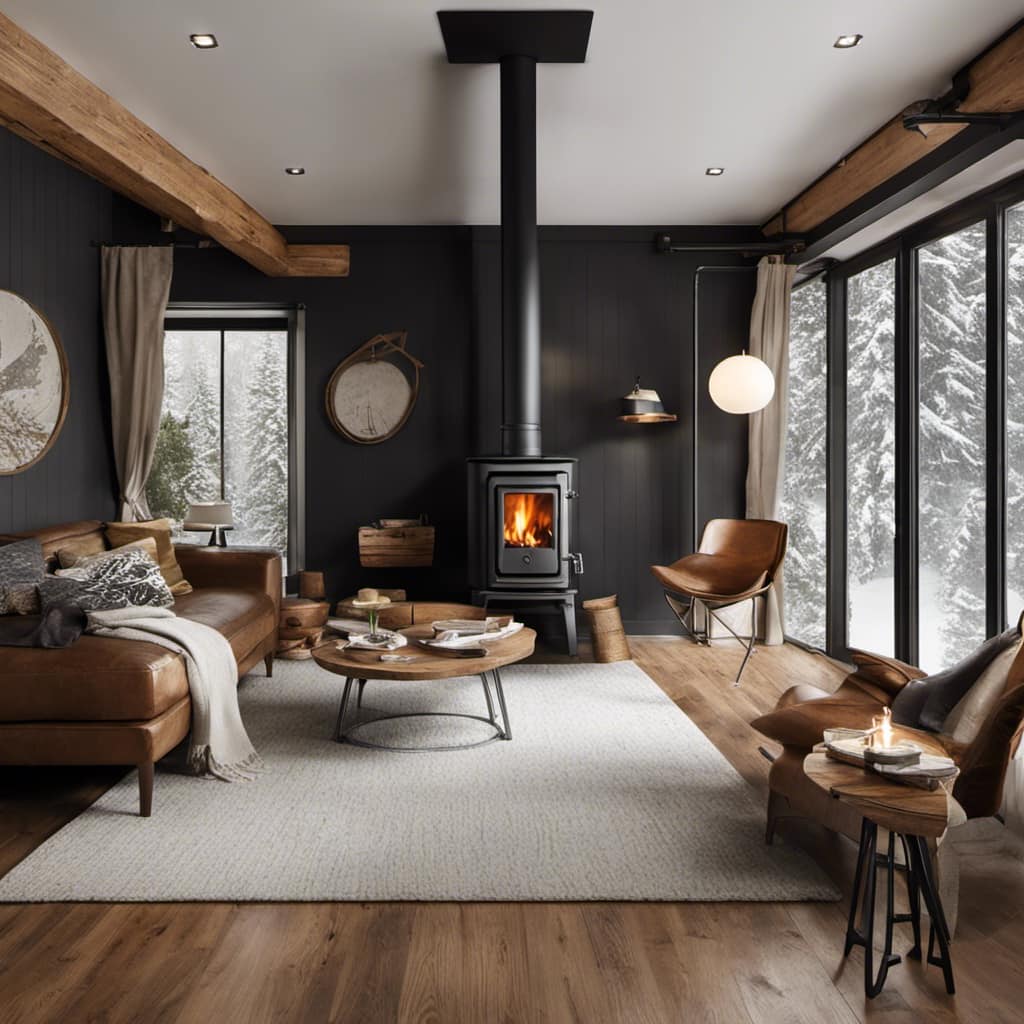
Are There Any Specific Building Codes or Regulations I Should Be Aware of When Installing a Wood Stove?
When installing a wood stove, it’s crucial to be aware of building codes and installation regulations. These guidelines ensure safety and compliance with local laws. Proper knowledge and adherence to these standards are essential for a successful installation.
Can I Use a Wood Stove as the Sole Heating Source for My Entire Home?
As the sole heating source for my home, a wood stove can be efficient, but it’s important to consider alternative heating options for backup. Wood stove efficiency is affected by factors such as insulation and ventilation.
What Are Some Common Signs of a Malfunctioning Wood Stove That I Should Watch Out For?
Some common signs of wood stove malfunctions include excessive smoke, difficulty starting or maintaining a fire, and strange odors. Regular maintenance and cleaning can help prevent these issues and ensure your wood stove operates efficiently.
Are There Any Additional Accessories or Equipment That I Should Consider Purchasing for My Wood Stove to Enhance Its Performance or Safety?
To enhance performance and ensure safety, I recommend a heat-resistant wall shield and a non-combustible floor protector behind your wood stove. These accessories provide added insulation and protect against potential fire hazards.
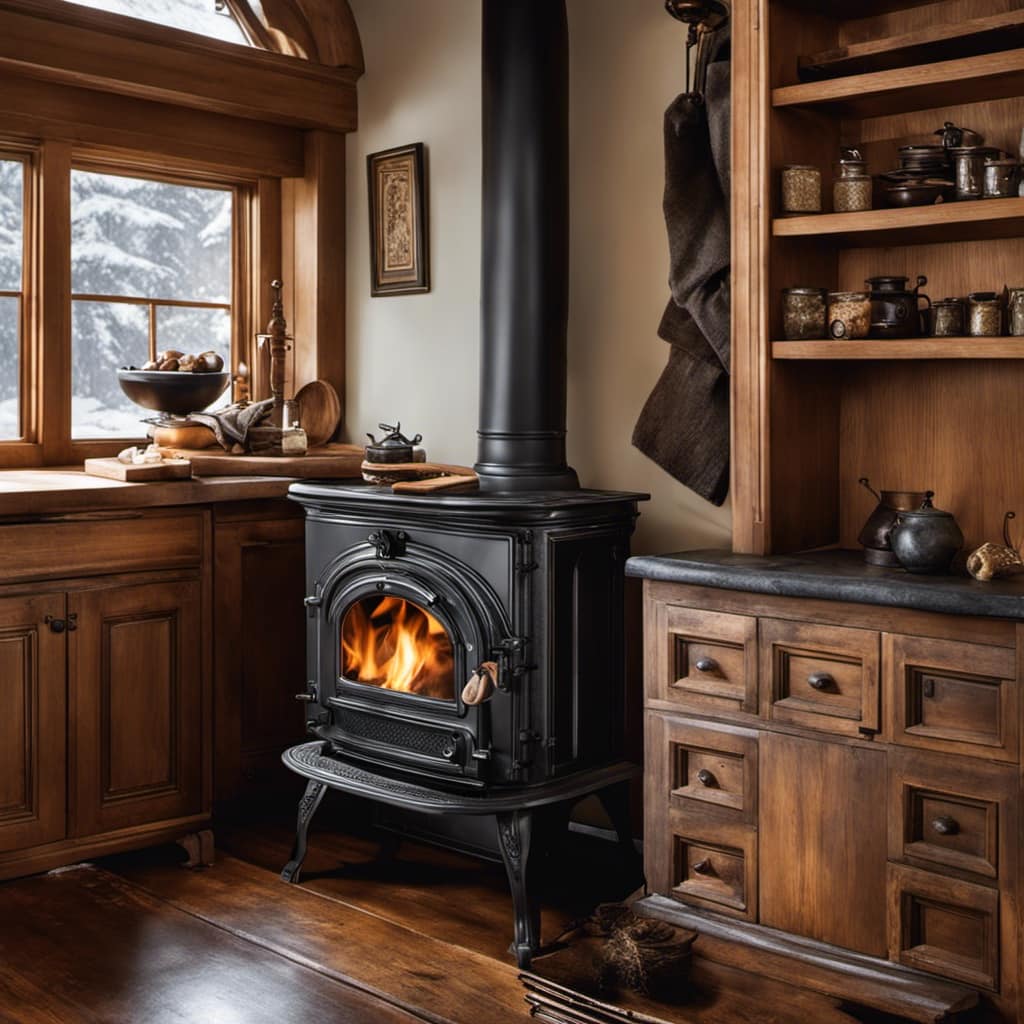
Conclusion
In the realm of wood stove installation, ensuring safety and efficiency is paramount. By understanding the importance of safety measures, insulation requirements, heat shields, clearance guidelines, and fireproof materials, one can create a secure and functional setup.
Like the solid foundation beneath a towering structure, these elements form the backbone of a wood stove, safeguarding against potential hazards.
So, remember to prioritize these aspects when setting up your wood stove, for they’re the pillars of a warm and secure home.
Growing up surrounded by the vast beauty of nature, Sierra was always drawn to the call of the wild. While others sought the comfort of the familiar, she ventured out, embracing the unpredictable and finding stories in the heartbeat of nature.
At the epicenter of every remarkable venture lies a dynamic team—a fusion of diverse talents, visions, and passions. The essence of Best Small Wood Stoves is crafted and refined by such a trio: Sierra, Logan, and Terra. Their collective expertise has transformed the platform into a leading authority on small wood stoves, radiating warmth and knowledge in equal measure.




